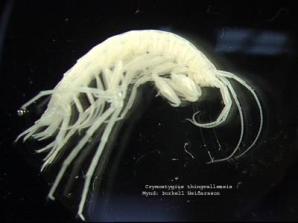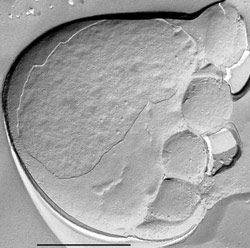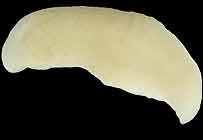‘Cryptic species’ are look-alikes.
Two or more species that have no visible differences, but have different genetic makeup- different to the point that there is no crossbreeding between the species.
Cryptic species can come from completely different evolutionary and genetic sources, or they can originally come from the same genetic background, evolving on different lines until they are no longer the same species. In either case, they are genetically incompatible animals, but somehow they still look identical.
In other words- you can only tell them apart by doing genetic tests, or by watching very carefully to see if there are separate breeding groups. Considering this, it is understandable that many of the cryptic species are only now coming to light, and many more may never be found.
The recent rise in genetic profiling of animal species has led to the discovery of literally thousands of cryptic species – animals which previously had been assumed to be of one species have now been found to be genetically unique.
German researchers Markus Pfenninger and Klaus Schwenk noticed an “exponential growth of publications on cryptic species.” They saw the confusion and lack of information surrounding this growing issue, and they decided to do some calculations.
Up until now, it’s been believed that cryptic species were more commonly seen among insects and reptiles, and that they tended to evolve more frequently in the tropics. However, after defining more than 22,000 cases of cryptic species discovered in the past twenty-eight years, the two researchers determined that look-alike species are found in similar frequency regardless of the type of animal or region of the world.
The this information has implications for every aspect of the bological sciences. Biodiversity projects, envronmental conservation, pathological studies, and even human health care could be affected by cases of unnoticed species, or mistaken identities.
How many more could be out there, now that we know that they’re more widespread than anyone thought?
Find the full article (with graphs) by Markus Pfenninger and Klaus Schwenk at BioMed’s free online open access library. It will be available in PDF until the HTML version is prepared in a day or two.



 Posted by zaxy
Posted by zaxy  Scientists at Holar University College and the University of Iceland have discovered two species of groundwater amphipods (one of which is in its own family). These are currently the only species known to be endemic to Iceland.
Scientists at Holar University College and the University of Iceland have discovered two species of groundwater amphipods (one of which is in its own family). These are currently the only species known to be endemic to Iceland.


 An international team of marine biologists recently announced the discovery of Kiwa hirsuta, a ten-legged crustacean that resembles a lobster covered with what looks like silky, blond fur. Dubbed the “Yeti crab,” the species was discovered 900 hundred miles south of Easter Island in the South Pacific, living near a hydrothermal vent at an ocean depth of about 7,540 feet. The biologists were conducting a diving cruise to learn how geographical barriers affect the distribution of animals living near vents along the Pacific and Pacific-Antarctic Ridges.
An international team of marine biologists recently announced the discovery of Kiwa hirsuta, a ten-legged crustacean that resembles a lobster covered with what looks like silky, blond fur. Dubbed the “Yeti crab,” the species was discovered 900 hundred miles south of Easter Island in the South Pacific, living near a hydrothermal vent at an ocean depth of about 7,540 feet. The biologists were conducting a diving cruise to learn how geographical barriers affect the distribution of animals living near vents along the Pacific and Pacific-Antarctic Ridges.